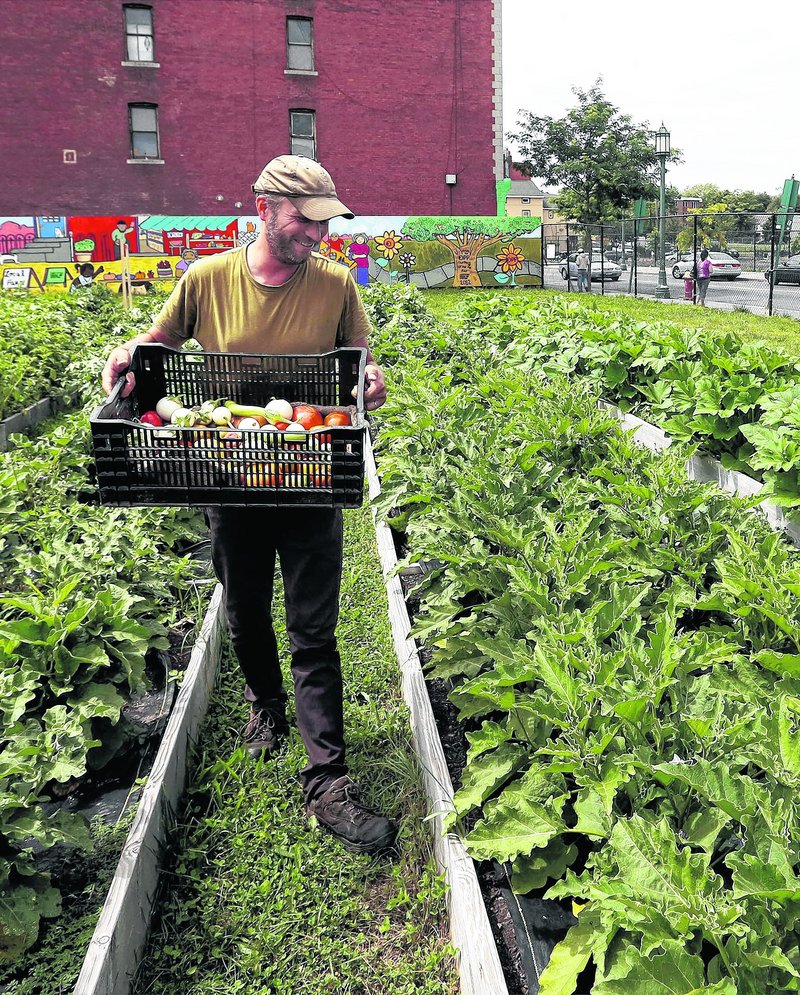HARTFORD, Conn. – It’s been 10 years since the founding of the Hartford Food System’s urban farm project Grow Hartford, and it just this year reached capacity, said farm manager Rodger Phillips.
“Last year our total was 25,000 pounds of produce and that’s, I think, pretty much our max right now,” he said. “We’ll probably do about the same this year. I think we’ve found the right size for our farm.”
It all began, Phillips said, with the Hartford Food System wanting to do something more local. One of its major food security programs was at Holcomb Farm in Granby, where inner-city children would go as part of a summer youth program to learn about food and where it comes from. Having them there was wonderful, Phillips said, but it required a significant amount of travel.
“Someone said, ‘Why don’t we start something in the city? Maybe we can replicate a farm here, have kids growing stuff in their neighborhoods,’” he said.
Laurel Street became the site of its first farm, and it’s currently where it has its two greenhouses: one for housing trays of seedlings, and the other, which it calls the “high tunnel,” for transplants. The greenhouses grow a variety of crops that include tomatoes, onions, salad greens, and peppers.
Phillips, on his fifth season with Grow Hartford and formerly an assistant farm manager in New Britain, described the Laurel Street site as “tucked away,” a “hidden oasis.” Each of Grow Hartford’s five sites has a unique personality, he said, describing some as “plopped in the middle of neighborhoods” with tall buildings on one side and houses on the other.
Its fifth and newest location at the corner of Park and Main streets is in full sight of a bus stop. People walk past it on the sidewalk, and the Hartford skyline is visible from the garden.
“There were a couple of large apartment buildings that caught on fire about eight years ago. The city was planning to build a big skyscraper and a casino and a plaza and a hotel. I think that was right around when the recession came, and that never materialized,” Phillips said. “In the meantime, we said, ‘Can we use this for our project?’“
It took about a year of planning to prepare the near-acre and to do extensive testing for lead in the soil. A little lead was found, and to be safe Grow Hartford built raised boxes and brought in clean soil. Plants grow better in raised beds anyway, as it turns out. “No one is walking on them,” Phillips said. “And they heat up well in spring, and they hold moisture.”
About 15 children participate in the summer program, and another 30 are involved through the rest of the year, Phillips said. Much of the food they produced goes to 35 families in a Grow Hartford program. Some goes to a food pantry, and some is sold at farmers markets.
Send questions/comments to the editors.



Success. Please wait for the page to reload. If the page does not reload within 5 seconds, please refresh the page.
Enter your email and password to access comments.
Hi, to comment on stories you must . This profile is in addition to your subscription and website login.
Already have a commenting profile? .
Invalid username/password.
Please check your email to confirm and complete your registration.
Only subscribers are eligible to post comments. Please subscribe or login first for digital access. Here’s why.
Use the form below to reset your password. When you've submitted your account email, we will send an email with a reset code.